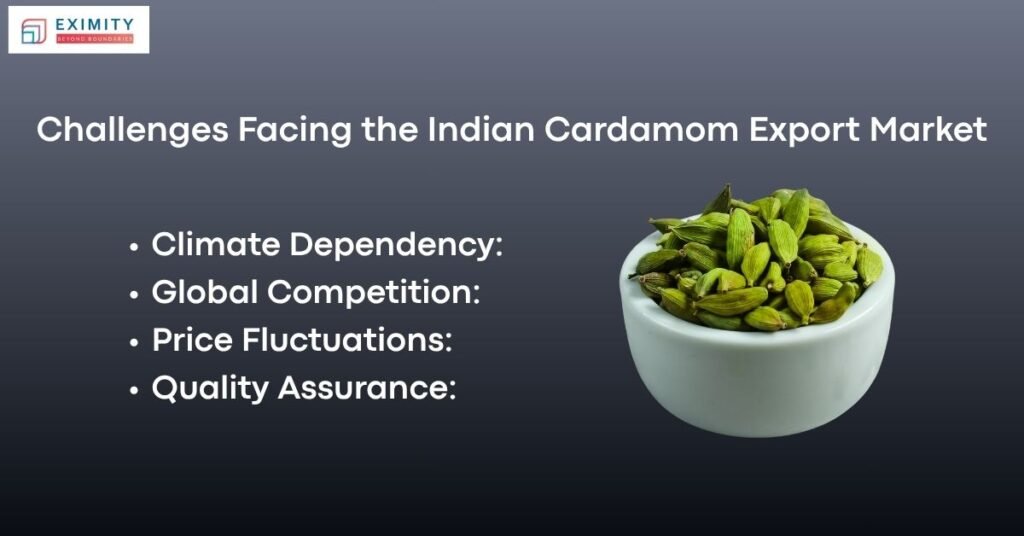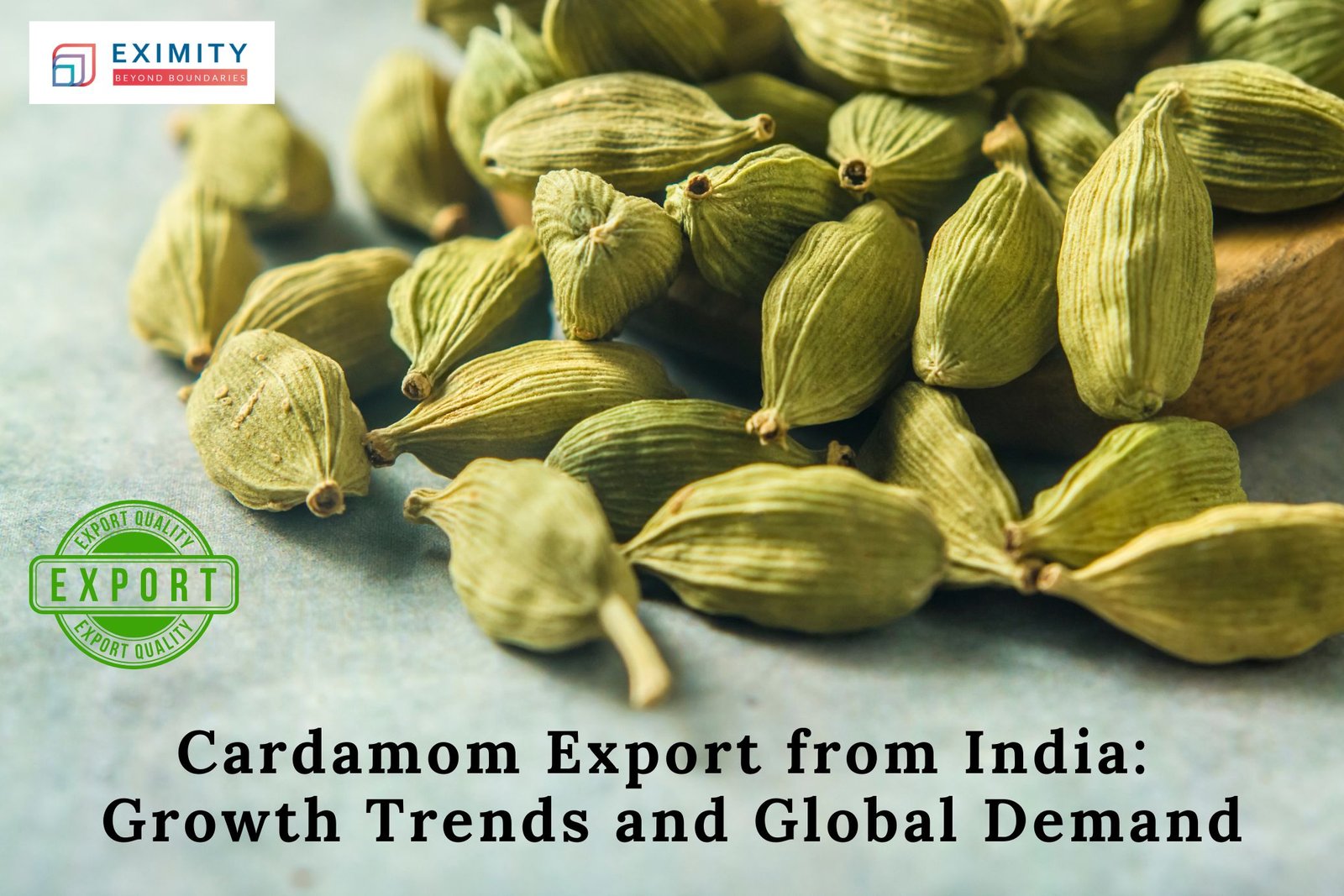India has an impressive ranking in the global spice market and the cardamom export from India helps to keep that legacy alive. India’s cardamom crop remains crucial in maintaining both the country’s reputation and the cardamom heritage and as such, India has been a global leader in both the cultivation and exportation of cardamom, including the green cardamom and premium quality grade cardamom, to Middle Eastern, European, and North American countries. Demand for natural flavoring and health beneficial products continues to soar and thus, the Indian cardamom sector expands and grows as well.
Cardamom Production in India Overview
Key Areas For Growing
The Areas India grows cardamom production in India lies in the Western Ghats. The reason the Ghats is a good growing region is due to the tropical climate and rich soil. The top cardamom growing states in India are Kerala, Karnataka and Tamil Nadu, with Kerala having the largest production of cardamom in India.
The cardamom-growing regions are known for the superior varieties of cardamom, including Malabar, Mysore, and Alleppey Green. Advanced irrigation techniques and organic farming practices make the cardamom even more sought after.
Farming Conditions and Varieties
- Cardamom grows between the altitudes of 600 and 1500 meters.
- It requires enhancements such as receiving between 2000-3500 mm of rain annually, growing in a rainforest-like environment, and having well-drained soil.
- The harvest period is between October and December.
For more details on India’s extensive spice trade network, please read our blog on Spices Export from India.
Export of Cardamom from India—Growth and Major Destinations
The demand for authentic Indian spices has led to a steady growth in the export of cardamom from India. There are more than 70 countries to which cardamom exporters in India supply both small and large cardamom. Saudi Arabia, the United Arab Emirates, and Kuwait, along with the USA and Japan, are the main target countries that Indian cardamom exporters focus on due to the Indian cardamom’s unique aroma and medicinal value.
The export sector has benefited from improvements in quality grading, packaging standards, and compliance with international food safety regulations. Cardamom’s use in confectionery, bakery, tea, and medicinal formulations continues to boost demand abroad. According to trade data, cardamom export from India has achieved steady year-over-year growth, driven by the spice’s versatility in global cuisines.
Cardamom is one of the most sought-after spices in global cuisine, and due to that fact, India has achieved remarkable year-after-year growth in cardamom exports. Like any other agro-based trade, cardamom most closely mirrors the trading of raisins and cashews. You can learn more about the trade dynamics in our detailed post, Dry Fruit Export from India.
Factors Driving the Growth of Cardamom Export from India
A multitude of factors have caused the cardamom export from India to blossom in the global marketplace:
- Rising Global Awareness: Many consumers globally are shifting to more natural and organic products, which cardamom is a perfect addition to.
- Government Support: Several programs from the Spices Board of India have strengthened the competitiveness of Indian exporters through multiple export subsidies and incentives.
- Improvement in Technologies: The modern techniques of drying, sorting, and packaging cardamom is a major contributor to the increased shelf life of the product.
- Health Benefits: Cardamom is increasingly popular in the health and wellness industry due to its medicinal benefits, which include improved heart health and digestion.
Exporters are also adding new products to their portfolios to cater to emerging markets in East Asia and Europe. To learn more about other profitable prospects, read our article, Top 10 Profitable Products for Import and Export Business.
Role of Cardamom Exporters in India.
In India, the success of cardamom exporters depends on their ability to maintain the highest quality cardamom and fulfill cardamom requirements of the global market. Exporters manage oil content, grading, vacuum sealing, color sorting, and oil content evaluation before shipment. They also use vacuum packing to maintain and keep cardamom fresh for long-range transportation.
These exporters work with farmers directly, training them and providing them with global market information. They boost the economies of thousands of small growers and help close the gap between production and export.
In addition, these exporters engage in international trade and attend trade fairs and exhibitions with the aim of introducing new clients to the Indian cardamom and its unmatched aroma.
Challenges Facing the Indian Cardamom Export Market.

The cardamom export industry, despite its global success, faces several challenges that could potentially jeopardize its continuity.
- Climate Dependency: Cardamom crops that are planted are very much dependent on the rainfall patterns, temperature, and time, which are very sensitive to global climate change.
- Global Competition: Guatemala is a new competitor in the industry, as they produce cardamom at a much cheaper rate.
- Price Fluctuations: Exports and farmers face profitability challenges due to market-controlled prices and fluctuating international prices.
- Quality Assurance: To retain the trust of the buyers, exporters face the challenge of proving their worth by steadily keeping the quality of production residue-free.
In order to stay competitive, spice exporters in India will have to invest in new technologies, improve storage, and add value products to their portfolio such as cardamom oil and extract.
Largest Producer of Cardamom in India – Regional Highlights
Kerala continues to hold its title as the largest producer of cardamom in India, contributing a major share of national output. The Idukki district alone accounts for nearly 70% of India’s total production.
Regional Overview
- Kerala – Notable producer of Alleppey Green Cardamom boasting unrivaled pungency and oil percentage.
- Karnataka – Notable producer of large cardamom, particularly Coorg.
- Tamil Nadu – New producer from Nilgiri, specializing in organic synthesis.
Access to strong cooperative frameworks, spice research institutions, and environmentally friendly farming methods have been a boon to these regions. If you want to enter the trade, consult How to Start Export Business in India.
Looking Ahead: Cardamom Export from India
New Export Markets
There is and will continue to be a steady increase in demand for high quality spices. As a result, cardamom export from India is projected to see an increase in demand. Countries located in Western Europe, the New World, and East Asia are new markets for Indian exporters.
Technological Progress and Export Quality Control
Modern exporters use tools such as blockchain and AI for quality control and transparency in the supply chain. These technologies increase the trust buyers have on exporters and help provide quality assurance.
Sustainability and Organic Certification
The future exports will also depend on sustainable and organic certified farming methods, due to buyers demanding sustainable sourcing from anywhere in the world.
Comparative Growth in the Spice Sector
India’s model for the export of cardamom is on the same line as the export of tea. For further such successful endeavors, refer to Indian Tea Export.
Final Thoughts
In conclusion, cardamom export from India is a symbol of tradition paired with excellence and innovation. The cardamom trade in India has shown strength in quality and diversity, from the fertile plantations in Kerala and Karnataka to the fiery export ports.We expect the cardamom exporters in India to achieve greater success by adopting sustainable and technology-driven practices.
The cardamom exporters in India are expected to achieve more than what has already been achieved due to the inclusion of sustainable practices and the technology-driven methods that are in place, which makes this a strong future for the cardamom spice industry in India.
The position of India makes it the largest producer of cardamom, which makes it a strong spice nation due to the demand of global consumers that are in search of authenticity and flavor.
With the implementation of innovative farming techniques and rapidly growing trade relations, India has developed new strategic policies that will enable it to compete in the global spice trade and make this story one of its proudest exports.

